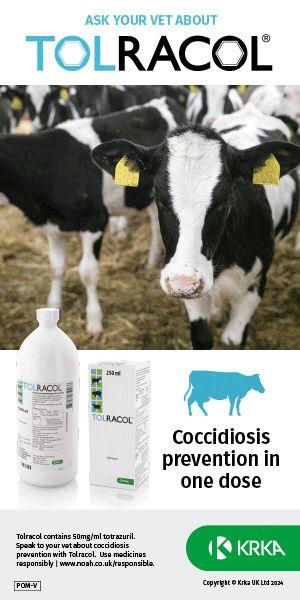Records from NADIS vets show that the first cases of necrotic enteritis this year were recorded in April. This uncommon but serious disease is usually only seen in late spring/early summer
What is necrotic enteritis?
Necrotic enteritis is a disease of unknown cause, seen in spring-born suckled calves at grass. These calves are usually between 6 and 16 weeks of age.
Clinical Signs
- Diarrhoea often with blood and mucous
- Inappetance, lethargy,
- Loss of condition, dehydration
- Ulcers may be present on lips, gums or tongue
- Death in over 95% of cases
- Other calves in group may show a mild diarrhoea, but rapidly recover
Diagnosis
- On the clinical signs described above
- Other diseases such as salmonellosis, coccidiosis and BVD need to be ruled out
- A post-mortem on fresh material is essential to confirm necrotic enteritis
Treatment
- None. The mortality rate is so high that euthanasia after eliminating other possible diseases is usually the best option.
Prevention
The cause of necrotic enteritis is not yet known. This means that there are, as yet, no effective preventative regimes. There may be some link to specific pastures, so if you have an outbreak, using a different pasture the following spring might reduce the risk of disease





